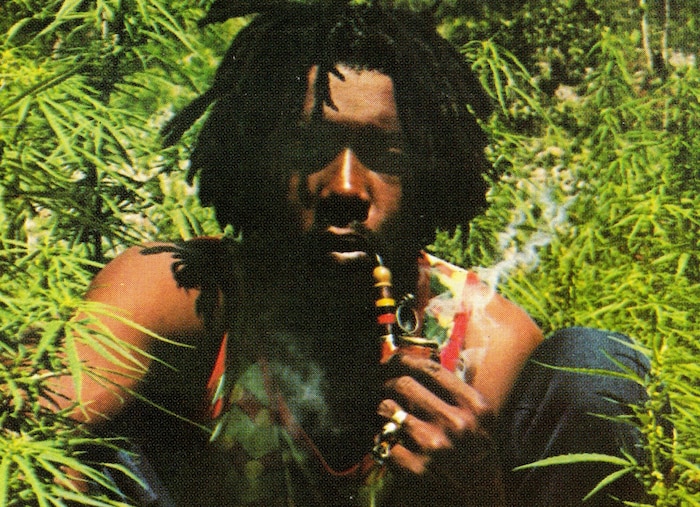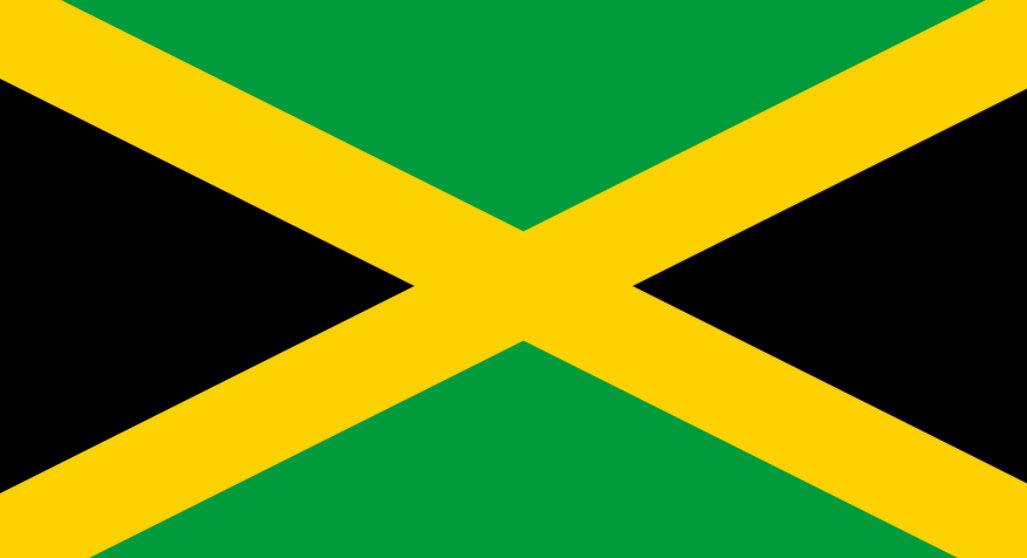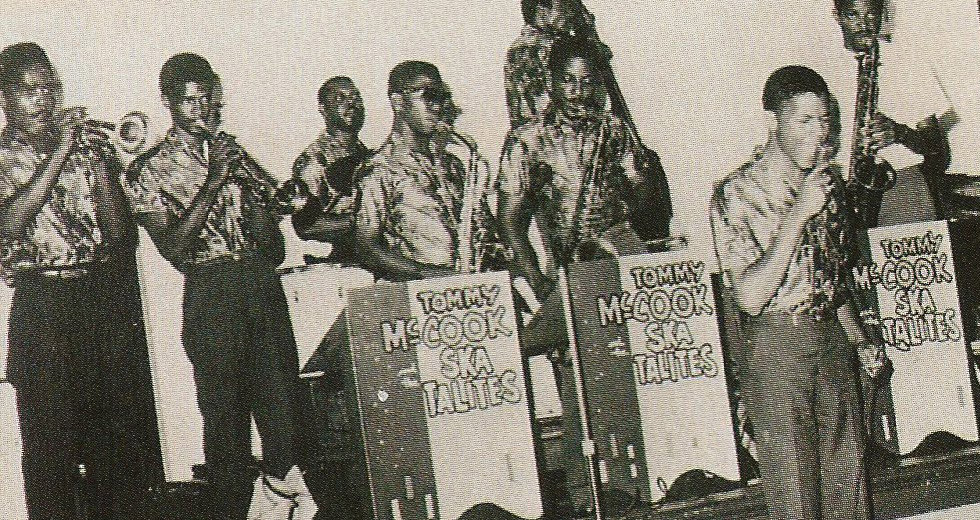Marijuana In My Brain
As Jamaica grapples with the potential repercussions of a new ganja law, David Katz takes a closer look at the evolution of marijuana songs in reggae

Just as acid rock will always be linked to LSD and whiskey with country & western, reggae has cannabis hardwired into its DNA. Many of the music’s best-known exponents have been followers of Rastafari, who hold the “wisdom weed” as an herbal sacrament. But many don’t realize the country’s strange relationship with the drug over the years. Peter Tosh’s “Legalize It” may be the ultimate toker’s anthem, yet it was locally banned when first released.
Ganja became entrenched in black working class culture in Jamaica during the early decades of the 20th Century. Nevertheless, since 1954, following pressure exerted by the British and American governments to end the ganja trade, marijuana has remained strictly illegal in the country, and locals often faced harsh penalties for possession. Indeed, last August, a young man from Montego Bay named Mario Deane was beaten to death after being detained with a single spliff.
The authorities’ approaches to ganja have often been dramatically contradictory in Jamaica. In her book The First Rasta, exploring the life of the charismatic Rastafari leader Leonard Howell, Helene Lee suggests that Howell’s Pinnacle commune had a symbiotic relationship with local police, who allowed the widespread cultivation of ganja at Pinnacle during the early 1950s, sold across the island through an underground network established by a corrupt businessman, in exchange for lucrative backhanders. However, Pinnacle suffered a brutally punitive raid in 1954 and another in 1958, the wanton violence of the latter causing its total dispersal. The destruction of the commune and scattering of Howell’s acolytes was a severe blow to the Rastafari movement, making ganja a temporarily scarce commodity. Nevertheless, Rastafari continued to grow in numbers across the island, and the ceremonial use of herb never diminished amongst its followers, despite different versions of the vilifying “War on Drugs” being rolled out in Jamaica over the years.
Rastas island-wide have praised the change that has finally allowed them to imbibe the holy herb without fear of persecution, but many feel the legislation has not gone far enough.
Recent changes in Jamaican legislation made it look as though the Rasta’s prayers were finally answered, since a bill partially decriminalizing the possession of small amounts of weed was approved by the cabinet last February. On April 15th, Justice Minister Mark Golding officially announced amendments to Jamaica’s Dangerous Drugs Act, which mean that anyone caught with up to two ounces of weed “for recreational, religious or medical use” will now face a small fine, and cannot be arrested or changed for the possession.
Given the drastic nature of the Deane case, such legislation seems long overdue. However, the island’s lawmakers have opted not to allow full legalization, and the legislation introduced so far continues to generate widespread local and international debate. Jamaican academic Sonjah Stanley-Niaah went so far as to call for the launching of a national ganja industry, with Jamaica fully in charge of its own large-scale production and export. The University of the West Indies has since launched the Cannabis Research Group, planting the nation’s first legal ganja stalk at its uptown Kingston campus on April 20th, with singer Kiddus-I on hand to ceremonially baptize the plant with herb smoke. Rastas island-wide have praised the change that has finally allowed them to imbibe the holy herb without fear of persecution, but many feel the legislation has not gone far enough.
As the nation grapples with the potential repercussions of the new ganja law, it is worth taking a closer look at the evolution of marijuana songs in reggae. The first known instances surface in the ska years when members of the Skatalites cut records referencing the culture, but these were initially covert in nature, taking the form of instrumentals whose titles made coded reference to the herb. For instance, in 1964, Tommy McCook recorded “Good Collie Bud” for Randys and Don Drummond cut “Cool Smoke” for Duke Reid; if you were down with the culture, you knew what the titles were alluding to, but the uninitiated were none the wiser.
When rock steady subsequently became the rage in Jamaica in the mid-’60s, there was a noticeable increase in ganja tunes, with vocalists finally being courageous enough to tackle the subject head-on. Hopeton Lewis’ “Cool Collie” was probably the earliest instance, the irresistible dance track describing its undeniable allure, despite the potential penalties: “Even the cops might intervene, but they won’t catch you on the scene,” Lewis suggests, atop a buoyant rhythm from Lyn Taitt and the Jets.
The subsequent shift from rock steady to early reggae at the end of the 1960s saw more noteworthy drifts into the ganja zone. King Stitt’s early deejay anthem, “Herbsman Shuffle,” had Stitt mimicking the sound of a weed hound taking deep hits from a spliff, mixed in with impenetrable Rasta dialogue (atop a reggae re-cut of Dave Bartholomew’s “South Parkway Mambo”); considerably popular with the skinhead crowd in Britain, the song is also important because it is one of the first “talking” records ever recorded in Jamaica, prefacing hip hop by some considerable years.
The roots reggae era of the 1970s is when the ganja tune really came into its own. Rastafari consciousness was becoming an increasingly overt part of the music, thanks to the efforts of Burning Spear, the Abyssinians, and a number of other likeminded peers, with ganja providing some of their greatest inspiration. Bob Marley and the Wailers were pioneers in this process, cutting the sensual “Kaya” in 1971 for Lee ‘Scratch’ Perry. Marley wrote the song after visiting the home of Perry’s mother as a tribute to a particularly excellent strain. The Wailers adapted Richie Havens’ “Indian Ropeman” as “African Herbman” for Perry too, emphasizing the widespread use of herb as part of black culture in Jamaica.
By the mid-1970s, gimmicky joke tunes were no longer in vogue where ganja was concerned. Instead, reggae songs began addressing particular aspects of marijuana culture with increased reverence. A number of records thus referenced the ceremonial kutchie, including “Bring the Kutchie Come,” a toasting record Young Dillinger recorded for Lee ‘Scratch’ Perry, and perhaps more artistically successful, a song of the same name produced by Niney the Observer, issued under the moniker The Reggae Crusaders, on which Niney implores his peers to “lick it till the gritty burn.” Later, Yabby You issued “Sipping I & I Chalice,” which related the pleasures of weed smoking in thick Rastafari patois. Taking the metaphor further, an actual self-contained band called Chalice was subsequently formed in Kingston, the group channeling releases through their Pipe Music label.
It is undeniable that ganja songs helped reggae to achieve its greatest heights of international popularity during the late-1970s. Bob Marley’s “Rebel Music (3 O’Clock Roadblock)” was one of the first to kick off the craze, the song recounting the ejection of a weed stash from his vehicle to avoid being arrested on the road, though it was somewhat eclipsed by Tosh’s “Legalize It,” which remains one of the music’s most endearing ganja entreaties. U Roy’s “Chalice In The Palace” suggested that the toaster would share a ceremonial toke with the Queen of England, while Tosh returned to the theme for “Buk-In-Hamm Palace,” an absurd flirtation with disco best experienced on its extended 12-inch release.
Culture’s “International Herb” was a huge hit on both sides of the Atlantic. Bigger still was Black Uhuru’s “Sinsemilla,” the title track of their breakthrough album for Island Records, which saluted the ever-popular seedless strain. By this point, even non-tokers were jumping on the bandwagon in an effort to reach the big-time, including Cornell Campbell, whose excellent “Hundred Pounds Of Collie” belied the fact that he has always been smoke-free.
The election of Edward Seaga in 1980 and the death of Bob Marley in 1981 saw a waning of Rastafari expression in reggae. As major overseas record labels dropped their commitment to Jamaican performers, the music began reinventing itself back home, returning to the core values of the sound systems, which have always been the greatest tastemakers on the island. The subsequent dancehall style was a harder sound with a rougher, more urban edge, reflecting the everyday realities of Kingston’s ghetto dwellers.
And yet, ganja songs continued to be issued at a fair pace. The Wailing Souls’ “Ishent Tree,” produced by Junjo Lawes, was a late roots/early dancehall offering, and Sugar Minott’s “Herb Man Hustling” proved that ganja tunes were well-suited to digital beats. In fact, the song that forced Jamaica into the digital age, Wayne Smith’s “Under Mi Sleng Teng,” was also a veritable ganja anthem, the lyrics and melody drawing directly from Barrington Levy’s earlier “Under Mi Sensi.”
In the hardcore dancehall years, performers suggested that increased ganja use would decrease dependence on heroin and crack cocaine, as heard on Ninjaman’s “Legalize the Herb” and Tony Rebel’s “The Herb.” And naturally, once Garnett Silk instigated the “Rasta Renaissance” of the mid-1990s, artists such as Luciano, Capleton and Sizzla have frequently turned to weed as a topic, as heard on Luciano’s reprisal of Tosh’s “Legalize It.”
Since then, ganja songs have enjoyed twin streams in Jamaican popular music, venerated the traditional way by “Reggae Revival” artists, while the hardcore dancehall posse takes the graphic “gangsta” route to the same conclusion. Thus, Protoje’s ironic “This Is Not a Marijuana Song” and Jah9’s “Steamers a Bubble” both express that herb smoking is a sacred and uplifting element of Rastafari consciousness; in contrast, Busy Signal’s “Step Out” equates marijuana with a part of thug life, its choral refrain of “wuk gal, bust guns, smoke weed, have fun” relegating it to the other end of the spectrum.
Will marijuana songs help bring about actual legalization in Jamaica? Regardless of what shape the law takes for the future, one thing is definitely certain: you can expect an endless supply of future ganja songs from the island’s performers, such is the culture’s all-pervasive nature.

